
Mounting and operating instructions
Recess-mounted exhaust air system
according to DIN 18017-3
ER-UP/GH
ER 60 E
ER 100 E
www.maico- ventilatoren.com
DE

2
1

Table of contents
3
Equipment overview (Figure 1)
ER-UP/GH recess-mounted housing
with plastic shutter (without fire protection
equipment)
1 Plastic backflow preventer:
Fig. 1 shows the installation position with
an air outlet direction to the right
2 Plastic exhaust socket
ER 60 E/ER 100 E fan insert
3 Fan insert
4 Electronic circuit boards
5 Housing floor seal
6 Sensor (H model)
7 Cover
8 Central screw
9 Regulating plate for second room
connection
10 Filter mat, filter class G2
ER-ZR second room connection set
11 Plastic installation socket for second room
extraction
12 Adapter
13 Protective grille
14 Filter mat, filter class G2
15 Suction duct, ZR connection
(not included in ER-ZR set)
P production date
S1 wiring diagram
S2 rating plate
S3 TÜV sticker
ER-AS (special accessories)
Extraction socket for WC seat ventilation
Ø 70
Table of contents
Scope of delivery ...................................................... 4
1. General notes ....................................................... 5
2. Specialist installer qualification ......................... 5
3. Intended use ......................................................... 5
4. Non-intended use ................................................ 5
5. Safety instructions ............................................... 6
6. Operating the fan ................................................. 9
7. Product information.............................................. 9
7.1 Installation conditions ........................... 9
7.2 Permitted exhaust air systems ........... 10
7.3 Possible combinations ....................... 10
8. Environmental conditions and
operating limits ................................................... 12
8.1 Regulations for operation with
fireplaces .................................................. 12
9. Technical data ..................................................... 12
10. Storage ............................................................... 12
11. Mounting preparations .................................... 13
11.1 Installation specifications for
ER-UP/GH with ER 60 E or ER 100 E
single room/second room ........................ 13
11.2 Preparations for wall installation ...... 14
11.3 Ceiling installation preparations ....... 15
11.4 Preparations for the electrical
connection ................................................ 17
11.5 Preparing the shutter ....................... 17
12. Housing installation ......................................... 18
12.1 Installing ER-UP/GH housing .......... 18
13. Electrical connection ....................................... 23
14. Installation of fan insert and cover ............... 25
14.1 Settings on electronic circuit boards 25
14.2 Installing fan insert ........................... 25
14.3 Installing the cover ........................... 27
15. Commissioning ................................................. 27
16. Cleaning, maintenance .................................. 28
16.1 Filter change .................................... 28
16.2 Filter change, second room ............. 29
16.3 Removing fan insert ......................... 29
17. Extraction socket ER-AS for
WC odour extraction ...................................... 30
18. Fault rectification .............................................. 31
19. Spare parts ........................................................ 32
20. Dismantling ........................................................ 32
21. Environmentally responsible disposal ........ 32
22. Wiring diagrams ............................................... 33
Acknowledgements:
© Maico Elektroapparate-Fabrik GmbH. Translation of
the German original operating instructions. Misprints,
errors and technical changes are reserved. The brands,
brand names and protected trade marks that are referred
to in this document refer to their owners or their products.

Scope of delivery
4
Scope of delivery
Depending on order, comprising:
● Shell kit = ER-UP/GH recess-mounted
housing + exhaust socket and plastic
s
hutter, complete.
● Final installation kit = fan insert
+ c
over, air filter and regulating plat
e
f
or second room connection
● Other accessories, e.g. ER-AS for
WC seat ventilation, spacer, wall or cover
frames, expanded rubber fitting etc.
When unpacking the unit, check to
make sure that the delivery is
complete. Please contact the dealer
if any accessories are missing or if
there has been any damage in
transit.
ER-UP housing (shell)
Recess-mounted housing ER-UP/GH
Article no. 0084.0370
● Recess-mounted plastic housing with
e
xhaust socket at rear Ø 75/Ø
80
(
no fire protection)
● Plastic shutter
● Plaster protective cover
● Mounting and operating instructions
Mounting support UPM 60/100 or ER-UPM
Article no. 0018.0010 or 0093.0277
● For securing the ER-UP/GH housing
Fan inserts (final assembly)
Fan insert ER 60 E / ER 100 E
Article no. internet or catalogue.
● Fan inserts with different control circuit
boards, depending on application. C
an be
us
ed in all ER-UP/GH recessed-mounte
d
hous
ings
● Internal cover with exhaust air filter
Other accessories
Second room connection set ER-ZR
article no. 0093.1025
● Comprising protective grille, filter mat
adapter, plastic exhaust socket
and
r
egulating plate
Extraction socket ER-AS (Ø 70)
article no. 0093.0928
● For connecting a WC seat ventilation duct
to an ER-UP/GH housing
Spacing frame DR 60/100
article no. 0059.0928
● For compensating for projection of max.
2 cm
Wall frame ER-MR
Article no. 0018.0024
● For housings that have been plastered too
deeply
Cover frame ER-AR
Article no. 0059.0899
● Prevents joints between housing/wall
Expanded rubber fitting ER-MO
article no. 0092.0361
● For acoustic insulation of recess-mounted
housing
Filter mats ZF 60/100
Article no. 0093.0680
● Replacement air filter for fan insert
ER 60/ER 100 and filter change indicator
(time strip)
Filter mats ZRF
Article no. 0093.0923
● Replacement air filter for second room
connection set ER-ZR

1. General notes
5
1. General notes
Please read these instructions
carefully. Follow the instructions.
Pass these instructions onto the
owner. Keep these instructions
somewhere safe.
The warnings provided, indicate hazardous
situations which, if not avoided will result in
death or serious injury in the case of
DANGER or could result in death or serious
injury in the case of WARNING.
CAUTION indicates a hazard situation which
could result in minor injuries if not avoided.
NOTICE indicates potential damage to the
product or its surroundings.
2. Specialist installer qualification
Mounting may only be carried out by specia-
lists who have the necessary knowledge and
experience in ventilation engineering.
Only a trained electrician is permitted to
work on the electrics. You are deemed a
trained electrician if you are familiar with the
relevant standards and guidelines, can
competently and safely connect units to an
electrical power supply in line with the
attached wiring diagram and are able to
recognise and avoid risks and dangers
associated with electricity on the basis
of your technical training and experience.
3. Intended use
These fans are used to extract air from
interior bathrooms and toilet rooms, storage
rooms and kitchens with an outside window.
If operated other than stated in DIN 18017-3,
the fans may also be used as standalone
units (fitted on the wall or ceiling) or to extract
air from other rooms (interior kitchen etc.).
These fans are only intended for domestic
use and similar purposes.
4. Non-intended use
These fans must not be used in the following
situations under any circumstances. Read
all the safety instructions.
DANGER
Risk of combustion/fire from
flammable materials, liquids or gases in
the vicinity of the ventilation unit.
Do not place any flammable materials,
liquids or gases near the fan, which may
ignite in the event of heat or sparks and
catch fire.
Explosion hazard. Explosive gases
and dusts may ignite and cause serious
explosions or fire
Never use the fan in an explosive
atmosphere.
Explosion hazard. Explosive
substances in lab extraction units may
ignite and cause serious explosions or fire.
Aggressive substances may damage the
fan.
Never use fan in combination with a lab
extraction unit.
WARNING
Risk to health from chemicals or
aggressive gases/vapours. Chemicals
or aggressive gases/vapours may harm
health, especially if they are distributed
throughout the rooms by the fan.
Never use fan to convey chemicals or
aggressive gases/vapours.

4. Non-intended use
6
NOTICE: Damage to the unit
● During the build phase, damage to unit
caused by soiling of the fan and air
channels.
Fan operation is not permitted during
the build phase.
● Grease and oil vapours from range hoods
may contaminate the fan and air channels
and reduce efficiency.
Never use fan to convey greasy air.
● Damage to the unit when continuously
conveying steam-saturated air.
Never use fan to convey steam-
saturated air.
● Damage to the unit due to imbalance
of the impeller when conveying solid
particles.
Never use fan to convey solid particles
that could stick to the fan.
● Damage to unit in the event of moisture
ingress. Fan with IP X5 degree of
protection.
Never use fan outdoors.
5. Safety instructions
WARNING
Risks for children and people
with reduced physical, sen-
sory or mental capabilities
or a lack of knowledge.
Fan may only be installed,
commissioned, cleaned and
maintained by people who
can safely recognise and
avoid the risks associated
with this work.
DANGER
Risk to health if filters are not replaced
or if there are no air filters.
Heavily contaminated or damp air filters
may collect substances hazardous to
health (mould, germs etc.). This
may also happen if the fan is not used
for an extended period. If the air filter is
missing, the fan and air channels become
soiled.
Never operate the fan without air filters.
Only use original filters.
Regularly (every 3 to 6 months) change
the air filter, depending on the degree of
soiling.
If the fan has not been used for a long
time, always replace the air filters.
CAUTION
Risk to health if fan is not correctly
cleaned.
Clean the fan regularly, at least every
2 years. This is the only way of ensuring
that the unit is running hygienically.

5. Safety instructions
7
WARNING
Risk of injury when working at heights.
Use appropriate, certified climbing aids
(ladders). Stability should be ensured, if
necessary have the ladders steadied by
a 2nd person.
Ensure that you are standing securely
and cannot lose your balance and that
there is no one under the unit.
WARNING
Exercise caution when handling
packaging materials.
Store packaging material out of the
reach of children.
DANGER
Danger of injury from damaged fan.
Switch the fans off immediately if you
discover damage or faults that could
endanger persons or property.
Prevent the unit from being switched
back on until it has been fully repaired.
CAUTION
Intended operation not ensured if
installed incorrectly. A fan not installed
correctly may result in operation not as
intended.
Only install fan in accordance with the
planning documents.
In particular, note the information on
ventilation channels and sound deadening.
DANGER
Risks from parts which may affect the
ventilation system which are added or
modified at a later date. Parts (range
hood, air-ventilated fireplace etc.) which
are added or modified at a later date may
result in health risks and operation which
is not permitted.
Parts may only be added or modified
at a later date if system compatibility is
established/ensured by a planning office.
If using an exhaust air range hood or air-
ventilated fireplace, this must be accepted
by a professional chimney sweep.
DANGER
Danger from operating with the fan not
fully mounted. Electric components are
a potential source of electric shock.
If the unit is open, all off the supply
circuits must be switched off (mains fuse
off), secured against being accidentally
switched back on and a visible warning
sign positioned.
Only operate the fan when it is
completely installed.
Do not cover the fan.
DANGER
Risk of injury and health risk in the
event of changes or modifications or
if components which are not permitted
are used.
The unit may only be operated with
original components.
Changes and modifications to the units
are not permitted and release the
manufacturer from any guarantee
obligations and liability, e.g. if the housing
is drilled at a point which is not permitted.

5. Safety instructions
8
DANGER
Danger of electric shock. Before
removing the housing cover and before
installing the electrics, switch off all supply
circuits as well as the mains fuse and
secure them against being accidentally
switched back on again. Attach a warning
sign in a clearly visible place.
DANGER
Danger if the relevant regulations for
electrical installations are not observed.
Before removing the upper part of the
housing/fan insert and before installing the
electrics, switch off all supply circuits as
well as the mains fuse and secure them
against being accidentally switched back
on again. Attach a warning sign in a clearly
visible place.
Be sure to observe the relevant regu-
lations for electrical installation; e. g.
EN 50110-1, in Germany this is particularly
VDE 0100, with the corresponding parts.
A mains isolation device with contact
openings of at least 3 mm at each pole is
mandatory.
Only connect unit to permanently wired
electrical installation and with NYM-O or
NYM-J cables, depending on the unit
variant, 3x 1.5 mm² or 5x 1.5 mm².
The units may only be operated using
the voltage and frequency shown on the
rating plate.
Unit may also be energized even when
at a standstill and may be switched on
automatically by sensors (time delay,
humidity etc.) or by the thermo switch in the
motor winding. Maintenance and fault
finding only permissible when carried out
by trained specialists.
The degree of protection stated on the
rating plate is only guaranteed if installation
is undertaken correctly and if the
connecting cable is correctly guided
through the cable grommet (The grommet
must completely enclose the cable
sheathing). The fan insert must also be
engaged and the housing cover installed.
DANGER of fire spreading
In the event of a fire, there is a risk
of the fire spreading
● if an incorrect connecting cable is
connected to the ER housing. Always
use the right duct material for the
ER housing chapter 11.1.
● if incorrect ceiling compound is used for
exhaust air systems with an intermediate
ceiling (aeroduct, PAM-GLOBAL RML
or ceiling penetration). Ensure that the
gap remaining between the main duct
and wall or ceiling is fully sealed with
non-flammable materials resistant to
deformation, such as concrete, cement
mortar or plaster.
● if the seal with the brickwork or wall
boards is incorrect. If used outside the
shaft, ensure that the gap remaining
between the connection duct and brick-
work/wall boards is fully sealed with
non-flammable materials resistant to
deformation, such as concrete, cement
mortar or plaster and for the wall boards,
special fire protection filler.
● if the metal exhaust socket [5] is
incorrectly connected to the connection
duct. 3 steel blind rivets are stipulated
for the connection with the exhaust
socket. These must not impair the
shutter function. Before commissioning,
ensure that the shut-off shutter is
moving with ease.
● if the metal shut-off shutter [3] is not
correctly inserted and screwed down in
the exhaust socket. During installation,
it is essential that the shut-off shutter is
correctly positioned and screwed down.
The soldered strut must be correctly
inserted and the shutter must move with
ease.

6. Operating the fan
9
6. Operating the fan
ER-UP units are usually switched on and off
manually (using a switch), depending on unit
variant and connection variant.
Barrier-free units work as per the automatic
function. Alternatively, these units can be
operated using an optional switch.
Please read chapter 7.3.3 (ER-UP controls)
or contact your installer or planner for details
of the special functions and operating
characteristics.
Control model
standard, EVZ or EG
The fan is switched on and off with a switch
that is to be provided by the customer.
Control model EH
Barrier-free unit. The fan switches on when
the air humidity limit value is exceeded. No
switch needed. The fan can also be operated
manually using an optional switch
function description in chapter 22.
If the fan is switched on and off
manually, function in accordance
with DIN 18017-3 is not always
ensured.
In the event of thermal overload, the
fan switches off automatically. Wait
until the motor has cooled down.
Cool-down time can be up to 10
minutes. The fan switches back on
automatically after cooling down.
7. Product information
The ER-UP/GH recess-mounted housings
are specified for ER recess-mounted versions
with ER 60 E or ER 100 E fan inserts.
Other ER-UP housing types are not permitted
for these fan inserts.
The connection diameter for ER-UP/GH
housings is Ø 75 or Ø 80.
7.1 Installation conditions
If installed in accordance with
DIN 18017-3, use is only permitted:
● in single air extraction systems with a
common main duct.
● with an air supply via shaft or duct.
● with permitted connection ducts.
● with the ER-UP housing and fan insert
suited to the system.
● with recess installation in the wall or
ceiling.
● if installation is undertaken correctly in
accordance with these instructions.
● with sufficient space from the wall or
ceiling.
● if unit is completely installed.
● with the correct air filters.
● with the outside air openings stated in the
planning documents.
If the installation deviates from
DIN 18017-3:
● ER-UP fans can also be used as
standalone units.
● Installation in the wall or ceiling is
permitted.
● ER-100 fans can be used to extract air
from another room (interior kitchen etc.).

7. Product information
10
7.2 Permitted exhaust air systems
In accordance with DIN 18017-3, the
following exhaust air systems are permitted
for ER-UP-GH.
Exhaust air system
ER-UP/GH
housing
aeroduct fire
protection system
no
PAM-GLOBAL RML
cast ventilation
system
no
Ceiling penetration
seal system
Yes*
System with fireproof
shaft
no
Air extraction system
without fire protection
Yes*
* ER-UP/GH can be used inside and outside
the shaft, connection duct made from
flexible aluminium duct, second room
connection made from
flexible aluminium
duct.
7.3 Possible combinations
The ER recess-mounted exhaust air systems
described here comprise a UP housing and a
fan insert with cover.
In the shell phase the ER-UP/GH housing
is installed, wired and provided with a plaster
protective cover.
If the second room connection kit ER-ZR is
used, the ER-UP/GH housings can also be
used for second room extraction.
WC seat ventilation at the same time as room
ventilation is possible using the second room
connection of the ER-UP/GH housings. The
Maico extraction socket ER-AS (Ø 70) should
be used for this purpose and a connection
established to the WC seat.
Final assembly is undertaken once the
plastering and paint work is complete.
For decentralised ventilation, an ER 60 E
or ER 100 E fan insert is placed in the UP/GH
housing, the exhaust air filter and cover are
fitted.
ER 100 E units are permitted for second
room air extraction. These can be combined
with the standard, EVZ or EG control models
chapter 12.1.1.
ER 60 units are not permitted for the
second room connection.
7.3.1 Recess-mounted housing ER-UP/GH
● Plastic housing without fire protection
equi
pment. Can be combined with ceili
ng
pen
etration seal.
● Suited to wall or ceiling installation, insi
de
or
outside the exhaust air shaft.
● Permissible air outlet direction with wall
installation: upwards, to right or to left.
● Plastic exhaust socket with airstream-ope-
rated plastic shutter, maintenance-free.
● For connecting second room ventilati
on
w
ith knockout points at bottom, on right
and left.
7.3.2 ER 60 E or ER 100 E fan insert
● Fan insert with cover and exhaust air filter
for installation in ER-UP/GH housing.
● Electrical plug connection for quick
installation in the ER-UP housing.
● Fan insert has snap-on attachment for
easy installation.
● Cover with exhaust air filter. Trouble-fr
ee
f
ilter change without using tools.
● It is possible to rotate the cover by ± 5° t
o
c
ompensate for housings which have bee
n
f
itted at an angle.
● Filter change without tools.
● For single room or second room air
extraction with one single fan.
Exception: H models are only permitted for
single room air extraction.
● H model: Barrier-free products, as the fan
switches itself on and off automatically.

7. Product information
11
● Energy-saving motor with thermal overload
protection. This switches itself off in the
event of overheating and then back on
again automatically after cooling down.
● The fans may be subject to jet water in
areas 1 and 2 (DIN VDE 0100-701:
2008-10 and/or HD 60 364-7:2007).
7.3.3 ER-UP controls (circuit board types)
ER-UP fans are available in various models
and with various unit properties. These
depend on the control/circuit board type
used in the fan insert [3].
The circuit variants and functions
suited to the circuit board type are
described in chapter 22.
Circuit board models
● EVZ model: With start delay and overrun
time.
● EG model: With base load circuit.
Continuous operation at 35 m³/h, high
speed
(full load) can be switched with
optional switch.
● EH model: Barrier-free. With humidity
control (fully automatic). Overrun time
controlled by program (15 minutes at full
load). Can also be operated manually with
optional switch.
Not suitable for second
room ventilation.
Unit type
Circuit board
type
Start delay
[s]
Overrun
time
[min]
Can be
controlled
by speed
Power
cable
[mm²]
ER 60 E
Standard board
no
3 x 1.5
ER 100 E
Standard board
yes
3 x 1.5
ER 60 EVZ, ER 100 EVZ
VZ board
50
15
no
5 x 1.5
ER 60 EG, ER 100 EG
G board
no
5 x 1.5
ER 60 EH, ER 100 EH
H board
15
no
5 x 1.5
Tolerance of time details max. + 20 %.

8. Environmental conditions and operating limits
12
8. Environmental conditions and
operating limits
The permissible maximum temperature of the
air medium is + 40 °C.
The domestic air supply must be set up so
that virtually no air can flow into the living
areas from the kitchen, bathroom or WC.
A room from which the air has to be extracted
must be fitted with a non-closable, free supply
air cross section of at least 150 cm², e.g. with
Maico door ventilation grille MLK.
All ER-UP units have resistance to interfe-
rence in line with EN 55014-2 (depending on
pulse form and energy factor 1000 to 4000 V).
These values can be exceeded when
operating with fluorescent tubes. In this case,
additional interference suppression measures
(L, C components or RC module, protection
diodes, varistors) are required.
Take the risk of draughts into account when
planning by selecting a suitable installation
location.
8.1 Regulations for operation with
fireplaces
Sufficient supply air intake must be
ensured during operation with air-ventilated
fireplaces. The maximum permitted pressure
difference per living unit is 4 Pa.
The fan may only be installed in rooms with
air-ventilated fireplaces if:
● the evaluation criteria drawn up by the
responsible, regional master chimney
sweep are met,
● a parallel operation of air-ventilated
fireplaces for liquid or gaseous fuels and
the air-extracting equipment can be
prevented, or
● the extraction of exhaust gas from the air-
ventilated fireplaces is monitored by
special safety equipment. The ventilation
unit or the fireplaces must be switched off
if the equipment is triggered.
9. Technical data
The sound power level L
WA7
is 30 to 49 dB(A),
depending on unit model. For more technical
data, the rating plate [S2].
For dimensions and characteristic curves
catalogue or internet maico-ventilatoren.com.
10. Storage
Only store fan horizontally in a suitable,
dry room. Ambient temperature - 10 °C
to + 60 °C.
Maico accepts no liability for corrosion
damage caused by improper storage,
e.g. storage in damp surroundings.

11. Mounting preparations
13
11. Mounting preparations
Suitable mounting material is to be
supplied by the customer.
11.1 Installation specifications for
ER-UP/GH with ER 60 E or
ER 100 E single room/second room
Number of units per floor, living unit
or fire zone
Max. 3 fans or 3 connections
Connection diameter Ø 75 or Ø 80 mm
Shaft wall Any board material
Connection ducts
inside the shaft
E.g. flexible aluminium duct AFR 80
between main duct in shaft and
ER unit, max. 2 m long
Connection ducts
outside the shaft
E.g. flexible aluminium duct AFR 80
between main duct in shaft and
ER unit, max. 2 m long
Duct elbows in the
unit connection duct
max. 90° bend, ascending
Number of duct elbows permitted
for wall installation
max. 2 x 90°
Number of duct elbows permitted for ceiling
installation
max. 2 x 90°
Regulating equipment in the
exhaust air duct
not permitted
Wall/ceiling opening for
Ø 80 unit connection duct
Brickwork or concrete:
130 mm

11. Mounting preparations
14
11.2 Preparations for wall installation
15 Suction duct for second room connection
on ER-UP/GH: flexible aluminium duct
AFR 75/AFR 80
18 Main duct: Steel folded spiral-seams duct
19 Connection duct on ER-UP/GH:
flexible aluminium duct AFR 75/AFR 80
20 Power cable
NOTICE
Damage to unit, malfunctioning in the
event of corrosion damage from mortar.
Ventilation ducts connected to the unit
must be wrapped with a suitable adhe-
sive tape to protect against corrosion
inside the brickwork, e.g. using cold-
shrink tape.
Preparing the shaft
1. Produce opening in shaft or alternativel
y
pr
oduce a wall facing. Ensure a suitable,
flat surface for the ER-UP housing so that
the fan insert can be safely inserted in t
he
housing later on.
2. For a second room connection, produc
e
an op
ening in the wall or shaft for t
he
s
uction duct [15]. Note permissibl
e
hous
ing installation positions.
3. Correctly attach main ventilation duct [18]
inside the shaft.
4. For fire protection systems, use ceiling
compound. To do this, encase the ceiling
and p
our in the material from above.
5. Connect connection duct [18], suitable for
the ER-UP housing, to the main duct
and
s
eal for ventilation.
6. Cut connection duct [19] to length, not
e a
m
aximum duct length of 2 m.
2

11. Mounting preparations
15
Cut connection duct to a length
which allows it to be fitted on the
exhaust socket and also sealed for
ventilation at the unit end.
7. Lay suction duct [15] and seal gap
remaining correctly as described in
previous mounting instructions.
8. Lay power cable [20] in shaft and allow to
protrude by around 30 cm above the shaft
opening.
9. Lay power cable [20] in line with
chapter 11.4.
11.3 Ceiling installation preparations
15 Suction duct for second room connection
on ER-UP/GH: flexible aluminium duct
AFR 75/AFR 80
18 Main duct: Steel folded spiral-seams duct
19
Connection duct on ER-UP/GH:
flexible aluminium duct AFR 75/AFR 80
20 Power cable
Be sure to note the mounting
information in chapter 11.2.
Preparing the shaft and suspended ceiling
1. Produce an opening in the suspended
ceiling (fire resistance not stipulated).
2. Produce opening for
connection duct [19]
Ø 75 or Ø 80 in shaft.
3. For a second room connection, produce
the opening in the wall or shaft for the
suction duct [15]. Observe installation
positions for the second room connection.
3

11. Mounting preparations
16
18 Main duct (steel folded spiral-seams
duct)
19 Connection duct ER-UP/GH:
Flexible aluminium duct
21 Floor ceiling
22 Steel threaded rod / stair bolt
23 Duct attachment Fig. 5
24 Duct clamp / clamping band
25 Ceiling compound
26 Shaft wall
27 Wall/board seal
28 Suspended ceiling
29 Steel screws or steel blind rivets
(3 of each)
30 Dowel:
30.1 Plastic dowel or anchor bolt
30.2 Metal expansion dowel
31 Retaining bolt with nut
32 Retaining bolt
33 Steel clamping band
Be sure to note the mounting
information in chapter 11.2.
Duct attachment with duct clamp, alterna-
tively duct attachment with clamping band
Maintain a maximum distance of 1.5 m
between the duct attachments [23].
4. Correctly attach main ventilation duct [18]
inside the shaft.
5. Fit ceiling compound for fire protection
s
ystems. To do this, encase the ceili
ng
and p
our in the material from above.
4
5

11. Mounting preparations
17
6. Fit duct attachments to ceiling ( Fig. 5).
Only use permitted attachment material.
DANGER
Risk of incorrect installation if non-
permitted attachment material is used.
Only secure connection duct to ceiling
with permitted attachment material
(duct clamp or clamping band).
7. Connect permitted connection duct [19]
to main duct and seal for ventilation, for
example with cold-shrink tape.
8. Apply wall/board compound [27]. Seal gap
between brickwork and folded spiral-
seams duct. The gap remaining must be
fully sealed with non-flammable materials
resistant to deformation. For example, use
concrete or cement mortar, for wall boards
use fire protection filler.
9. Fit suspended ceiling. Ensure a suitable,
flat surface so that the fan insert can be
safely inserted in the housing later on.
10. Lay power cable [20] in line with chapter
11.4.
11.4 Preparations for the electrical
connection
DANGER
Danger to life from electric shock.
Before laying the power cable, switch off
all supply circuits. Switch off mains fuse,
secure against being accidentally
switched back on and position a visible
warning sign.
Notes
● Always note the relevant specifications for
electrical installations and when fitting
equipment. In Germany, observe DIN
VDE 0100 and the corresponding parts
in particular.
● Observe ambient conditions and technical
data ( chapters 8 and 9).
● Note permitted duct cross-section of
max. 1.5 mm².
1. Switch off mains fuse, secure against
being accidentally switched back on and
position a visible warning sign.
2. Lay power cable to the installation
location.
3. Continue with safety check of trigger
equipment according to chapter 11.5.
11.5 Preparing the shutter
11.5.1 Plastic shutter without fire
protection ‒ ER-UP/GH housing
NOTICE
If the installation position is wrong, the
plastic shutter will not close sealed.
Odours may then escape from the
ventilation channel.
Insert shutter [1] to the rear in exhaust
socket [2] of ER GH housing as appropriate
for installation position, Before fitting
housing, it is essential that the position of
the shutter is checked and its function
ensured.
As a rule, use the installation position
with an air outlet direction facing the
rear for ceiling installation.
Position of plastic shutter with air outlet
facing the rear
Checking the shutter
1. Pull shutter [2] out of exhaust socket and
check backflow preventer for ease of
movement.
6

11. Mounting preparations
18
2. Check shutter seal (visual check). This
m
ust fit tightly.
3. Insert shutter [2] into exhaust socket a
s
s
hown in Fig. 6 until it reaches the stop.
Check position and ensure function.
4. Observe correct position of housing floor
seal in housing. If the installation positi
on
i
s incorrect, the fan insert cannot fit tightl
y
and t
he unit draws in false air.
12. Housing installation
12.1 Installing ER-UP/GH housing
12.1.1 Impermissible connections on
ER-UP/GH housing
● A second room connection with an ER 60
fan insert (all models) is not permitted.
● Use of an ER fan is not permitted in the
bat
hroom or toilet room if other rooms i
n
t
he apartment are to be vented with t
he
s
ame unit at the same time.
12.1.2 Mounting information for
ER-UP/GH housing
ER-UP/GH are equipped with a plastic
housing without fire protection equipment.
The ER-UP/GH housing may be installed in
the following installation positions:
● Mounting on wall: With upward, right-hand
or left-hand air outlet direction (exhaust
socket).
Installation with mounting support.
● Mounting on ceiling and suspen
ded
c
eiling: Installation with mounting support.
● Mounting on ceiling and non-suspen
ded
c
eiling: Mounting directly on the ceiling.
Suitable mounting material is to be supplied
by the customer.
The plastic shutter should be prepared
according to chapter 11.5.1 so that it
closes fully sealed in the installation
position.
T
he ER-UP/GH housing must be inserted
without any warping. Failure to do so will
mean that the fan insert cannot engage
correctly in the ER-UP/GH housing and the
degree of protection stated on the rating plate
is no longer ensured.
Break open one of the housing segments [S]
to use the second room connection set
ER-ZR or the extraction socket ER-AS.
A WC seat ventilation unit is connected to the
ER-UP/GH housing using the Ø 70 extraction
socket ER-AS.
The WC seat ventilation unit must
not be connected to the second room
connection socket or the Centro
exhaust air element.
Use expanded rubber ER-MO for acoustic
insulation of thin ceilings capable of
resonance ( accessories).
12.1.3 Important information about
plastering
● Max. compensable plaster overshoot 7 mm.
● Max. protruding housing edge 20 mm, c
an
be compensated for with spacing frame
D
R 60/100.
● Installation at a depth of 50 to 100 mm can
be c
ompensated for with the two-part wall
frame ER-MR.
● The gap remaining between the ER-UP/GH
housing and shaft must be fully seal
ed
w
ith non-flammable materials resistant t
o
def
ormation so that incorrect air is not
drawn in.
We recommend keeping these
mounting and operating instructions
until final installation in the ER-UP/GH
housing.

12. Installation ‒ ER-UP/GH - single room
19
2 Exhaust socket with plastic shutter
18 Main duct, steel folded spiral-seams duct
19 Connection duct, flexible aluminium duct
AFR 80 Ø 75/ Ø 80
20 Power cable
37 Mounting support UPM 60/100 (2 items)
38 Plaster protective cover
39 Cable grommet
40 Expanded rubber ER-MO
12.1.4 ER-UP/GH wall installation,
single room
1. Take plaster protective cover [38] out of
ER-UP/GH housing.
NOTICE
The unit will be damaged and function
impaired if the fixing screws used are
incorrect / too long.
Fixing screws may not penetrate into
ER-UP/GH housing. Use screws pro-
vided (mounting support UPM 60/100).
2. Cut the mounting support [37] to the
required length, bend it into shape and
fix it to the ER-UP/GH housing with the
supplied fixing screws.
3. Mark fixing holes for mounting support on
rear shaft wall, produce holes and insert
dowels. Suitable mounting material is to
be supplied by the customer.
DANGER
Danger of short-circuits and damage to
the unit. If the cable grommet [39] is not
installed correctly, water may penetrate
the ER-UP/GH housing. The degree of
protection can no longer be guaranteed.
Drive through cable grommet so that it
can seal the cable sheathing all the way
round (circular, no slots).
4. Insert power cable [20] from rear of
housing through cable grommet [39] into
ER-UP/GH housing.
5. Insert the ER-UP/GH housing with the
mounting support [37] into the shaft and
fix it to the rear wall of the shaft.
7

12. Installation ‒ ER-UP/GH - single room
20
DANGER
Fire may spread if connection duct [19]
is incorrectly installed.
Only use permitted cable sheathing
( chapter 11.1).
Correctly attach connection duct to
exhaust socket.
6. Connect connection duct [19] to exhaust
socket [2] sealed for ventilation, e.g. with
c
old-shrink tape.
7. Make the electrical connection chap. 22.
8. Insert the plaster protective cover in the
hous
ing.
9. Plaster in housing flush with front edge,
note tile thickness if necessar
y
c
hapter 12.1.3.
12.1.5 ER-UP/GH ceiling installation,
single room
1. Take plaster protective cover [38] out of
ER-UP/GH housing.
NOTICE
The unit will be damaged and function
impaired if the fixing screws used are
incorrect / too long.
Fixing screws may not penetrate into
ER-UP/GH housing. Use screws pro-
vided (mounting support UPM 60/100).
2. For suspended ceilings, cut mounting
support [37] to the required length, bend it
into shape and fix it to the ER-UP/G
H
hou
sing with the supplied fixing screws
( Fig. 7).
3. Mark fixing holes for mounting support
and/or ER-UP/GH housing on ceiling,
produce holes and insert dowels. Suitable
m
ounting material is to be supplied by t
he
c
ustomer.
DANGER
Risk of short-circuits and damage to
unit. If the cable grommet [39] is not
installed correctly, water may penetrate
the ER-UP/GH housing. Protection class
is not guaranteed.
Drive through cable grommet so that it
can seal the cable sheathing all the way
round (circular, no slots).
4. Insert power cable [20] from rear of
housing through cable grommet [39] int
o
ER-U
P/GH housing.
5. Move ER-UP/GH housing into desir
ed
pos
ition and secure to ceiling with/without
mounting support.
DANGER
Fire may spread if connection duct [19]
is incorrectly installed.
Only use permitted cable sheathing
( chapter 11.1).
Correctly attach connection duct to
exhaust socket.
6. Secure connection duct [19] to exhaust
socket [2]. Then seal well for ventilation,
e.g. with cold-shrink tape.
7. Make the electrical connecti
on
c
hapter 22.
8. Insert plaster protective cover [38] in t
he
hous
ing.
9. Plaster in housing flush with front edge.
Page is loading ...
Page is loading ...
Page is loading ...
Page is loading ...
Page is loading ...
Page is loading ...
Page is loading ...
Page is loading ...
Page is loading ...
Page is loading ...
Page is loading ...
Page is loading ...
Page is loading ...
Page is loading ...
Page is loading ...
Page is loading ...
-
 1
1
-
 2
2
-
 3
3
-
 4
4
-
 5
5
-
 6
6
-
 7
7
-
 8
8
-
 9
9
-
 10
10
-
 11
11
-
 12
12
-
 13
13
-
 14
14
-
 15
15
-
 16
16
-
 17
17
-
 18
18
-
 19
19
-
 20
20
-
 21
21
-
 22
22
-
 23
23
-
 24
24
-
 25
25
-
 26
26
-
 27
27
-
 28
28
-
 29
29
-
 30
30
-
 31
31
-
 32
32
-
 33
33
-
 34
34
-
 35
35
-
 36
36
Maico ER 60 E Mounting And Operating Instructions
- Type
- Mounting And Operating Instructions
Ask a question and I''ll find the answer in the document
Finding information in a document is now easier with AI
Related papers
-
Maico Centro-E Mounting And Operating Instructions
-
Maico ER-AH Mounting And Operating Instructions
-
Maico ECA 120 Mounting And Operating Instructions
-
Maico ECA 120 SERIES Mounting And Operating Instructions
-
Maico ECA 150 ipro H Mounting And Operating Instructions
-
Maico AKE 100 Mounting And Operating Instructions
-
Maico ECA 100 ipro Series Mounting And Operating Instructions
-
Maico AKE 150 Mounting And Operating Instructions
-
Maico EN 31 Mounting And Operating Instructions
-
Maico ECA 100 ipro B User manual
Other documents
-
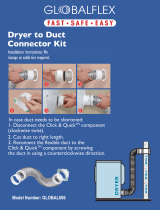 GLOBALFLEX Global006 Operating instructions
GLOBALFLEX Global006 Operating instructions
-
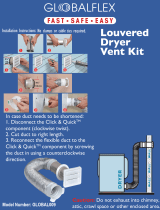 GLOBALFLEX Global009 Operating instructions
GLOBALFLEX Global009 Operating instructions
-
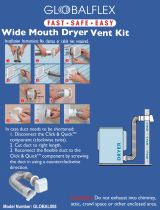 GLOBALFLEX Global008 Operating instructions
GLOBALFLEX Global008 Operating instructions
-
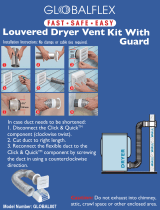 GLOBALFLEX Global007 Operating instructions
GLOBALFLEX Global007 Operating instructions
-
 Maax US 106172-L-000-001 Specification
Maax US 106172-L-000-001 Specification
-
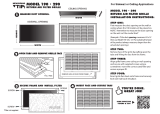 TruAire E4011FG2 Operating instructions
TruAire E4011FG2 Operating instructions
-
Lightolier Lytespan Track Lighting System 1960 User manual
-
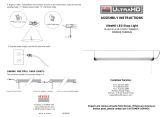 Seville Classics WEB628 Assembly Instructions
Seville Classics WEB628 Assembly Instructions
-
Lightolier IS:C3FTA User manual
-
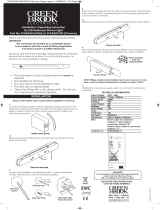 GreenBrook STA4LEDN Operating instructions
GreenBrook STA4LEDN Operating instructions











































